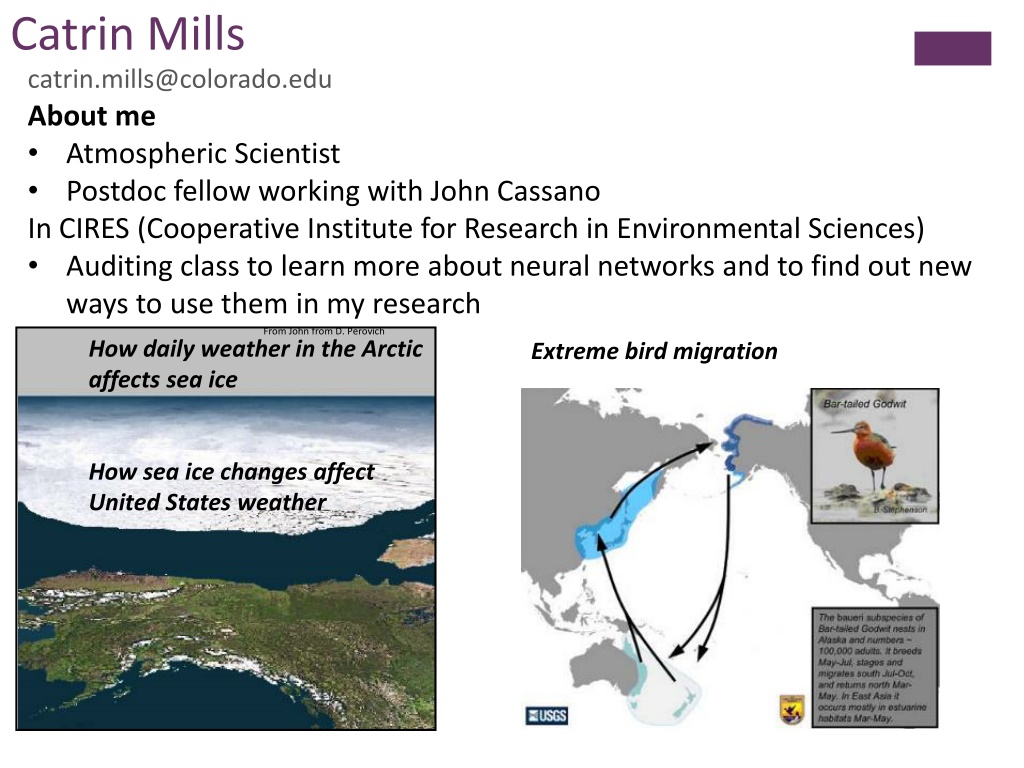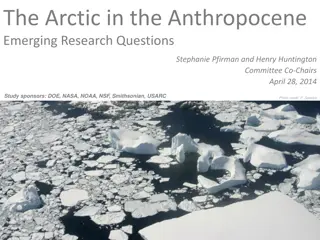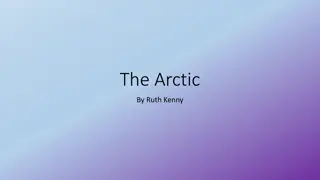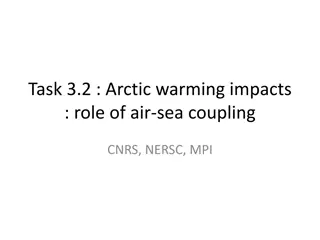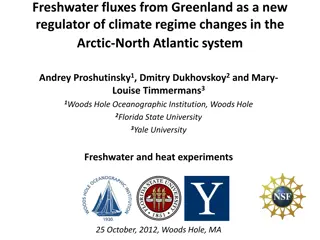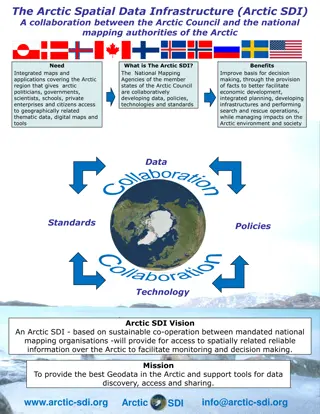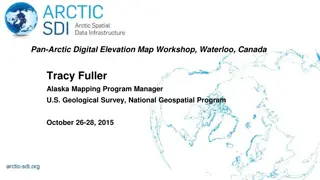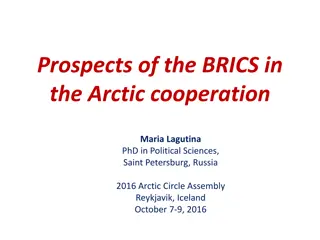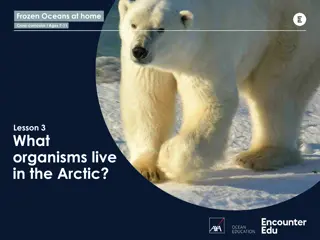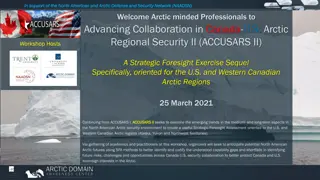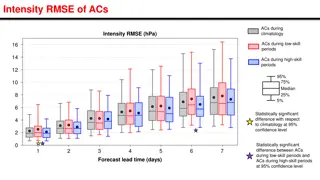Understanding Arctic Climate Change Dynamics: A Scientist's Perspective
Atmospheric scientist Catrin Mills, a postdoc fellow at CIRES, delves into the impact of daily weather on Arctic sea ice, exploring its implications for native communities, flora, fauna, stakeholders, and industries. Motivated by coastal inundation and the atmospheric influence on sea ice, she investigates the role of pressure gradients, wind patterns, and yearly ice extent variations. Through her in-depth research, she aims to uncover new insights into climate change in the Arctic region.
Download Presentation

Please find below an Image/Link to download the presentation.
The content on the website is provided AS IS for your information and personal use only. It may not be sold, licensed, or shared on other websites without obtaining consent from the author. Download presentation by click this link. If you encounter any issues during the download, it is possible that the publisher has removed the file from their server.
E N D
Presentation Transcript
Catrin Mills catrin.mills@colorado.edu About me Atmospheric Scientist Postdoc fellow working with John Cassano In CIRES (Cooperative Institute for Research in Environmental Sciences) Auditing class to learn more about neural networks and to find out new ways to use them in my research From John from D. Perovich How daily weather in the Arctic affects sea ice Extreme bird migration How sea ice changes affect United States weather
+Climate Change in the Arctic The Arctic (North Pole) has experienced a rapid reduction of sea ice in recent decades, especially during summer months Sea ice minimum occurs in September 2012 Sep Arctic Ice Extent September Arctic Ice Extent 1979 2000 median Huge implications for native communities, native flora and fauna, stakeholders, oil industries, and even weather where we live
+Motivations Coastal inundation due to strong winds http://www.youtube.com/watch?v=cx0ktOh4DjE MODIS image acquired 8 Nov 2011 taken from NASA.
+Motivations The atmosphere is the primary mover of sea ice Sea ice is also thinner more mobile Sea ice is becoming more sensitive to day-to-day weather Like storms! What role is daily weather playing in determining year-to-year changes of sea ice?
+Motivations The atmosphere is the primary mover of sea ice Sea ice is also thinner more mobile Sea ice is becoming more sensitive to day-to-day weather Like storms! What role is daily weather playing in determining year-to-year changes of sea ice?
+ Background Sea Level Pressure, an important variable You ve probably seen something like this on the Weather Channel Pressure gradients why the wind blows! Air flows into and CCW around Lows Air flows out of and CW around Highs In the Arctic
+Background Scientists have been evaluating the relationships between Arctic weather and sea ice variability May-June-July SLP (colors) and surface wind stress (vectors) Yr-to-yr change in Sep ice extent 2 Ice Extent (106 km2) 1 H 0 L -1 -2 1998 2001 2004 2007 1980 1983 1986 1989 1992 1995 Year 2010 Screen et al. (2011) Ice loss years: 2007, 1997, 1993, 1995, 1990, 2002 Ice gain years: 1996, 1992, 1994, 2009, 1980
+Background Scientists have been evaluating the relationships between Arctic weather and sea ice variability Certain weather patterns favor year-to-year ice loss or ice gain May-June-July SLP (colors) and surface wind stress (vectors) This could have predictive power, but H L I can t look at ~12,000 days of weather maps! Self-organizing maps (SOMs) will offer an efficient way to make sense of a large amount of data Screen et al. (2011)
+Research Goals Using SOMs Objectively categorize observed daily weather patterns over the Arctic Are there trends in time series? Determine relationships between weather pattern occurrences and how much Arctic sea ice exists in September Do sea ice metrics correlate to any of the weather patterns? September Arctic Ice Extent
+Research Goals Using SOMs Compare the real world data to global climate model output If we are going to use models to simulate present and future ice loss Models must get daily weather patterns correct Some studies show that the loss of Arctic ice may impact U.S. weather More persistent weather patterns Can NNs ID weather that will last longer?
+THANKS! Questions? Suggestions? From John from D. Perovich
